Dry: A Weekly Western Drought Digest — August 16, 2022
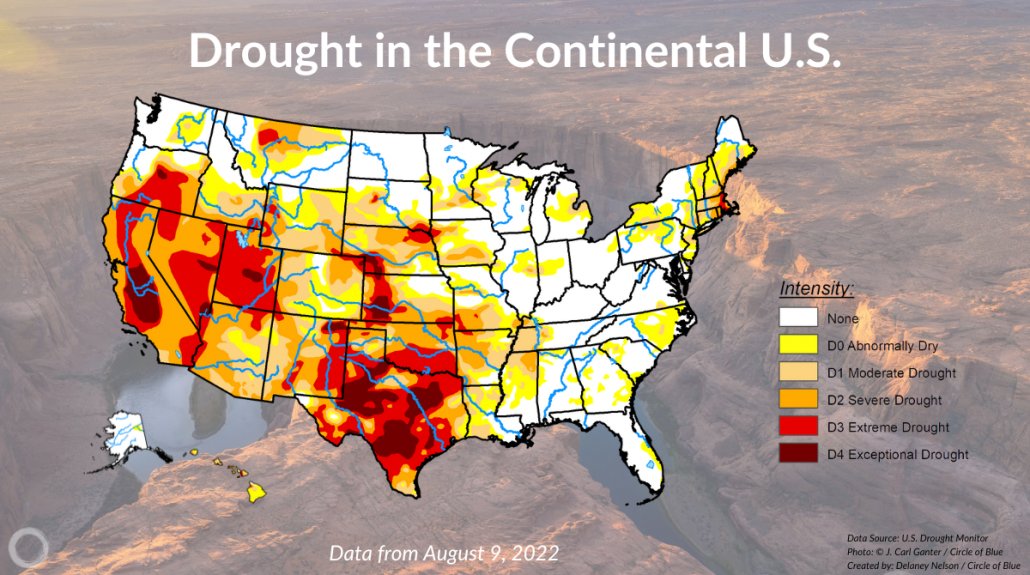
By Delaney Nelson, Circle of Blue – August 16, 2022
The American West is experiencing its most severe drought in 1,200 years. The consequences are far-reaching and long lasting. Forests become tinder boxes. Hydropower is weakened. Human health and wildlife are threatened.
Each week, Circle of Blue breaks down the biggest stories, the latest data, and the most promising solutions to the United States’ most urgent water crisis. Read Dry: A Weekly Western Drought Digest, your go-to news brief on the drying American West.
TOP NEWS
- As of August 9, nearly 42 percent of the U.S. and Puerto Rico are in drought, down three percentage points in the last month. Monsoon precipitation and soil moisture have slightly eased drought conditions throughout the Southwest.
- The House passes the Inflation Reduction Act, which allocates $4 billion to the Bureau of Reclamation.
- Flash floods in the driest spot in North America cause damage to roads and water systems.
- Texas border counties issue emergency disaster declarations as the Falcon International Reservoir reaches historic lows.
THE NUMBERS
- More than 127 million people live in areas experiencing moderate drought or worse. According to the U.S. Drought Monitor, dry conditions are present across 232 million acres of cropland.
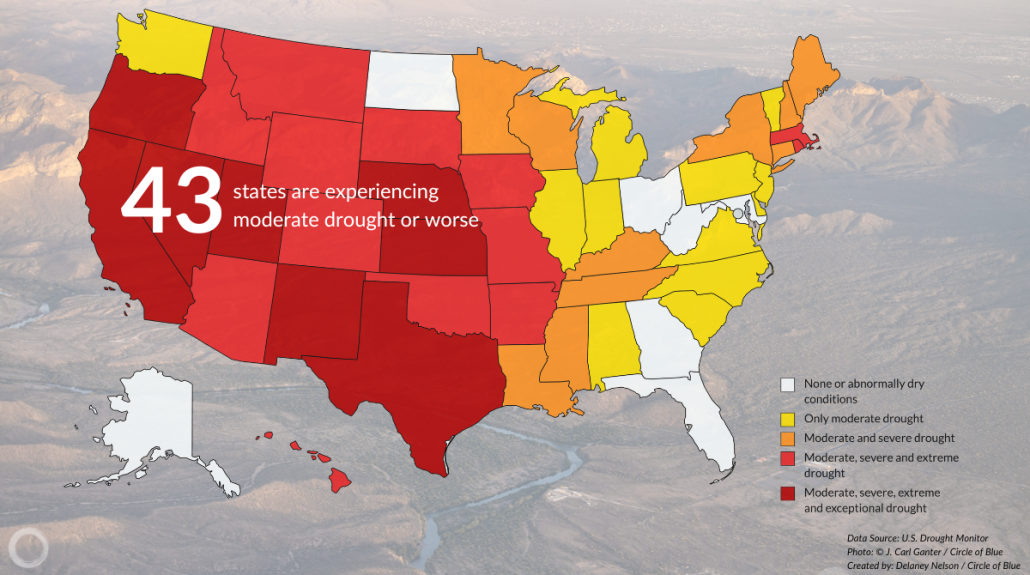
- Water levels at Lake Travis, a Texas destination north of Austin known for outdoor recreation, are falling. The lake is about half full, down by a third in the last year. Boaters are concerned that their vessels could scrape sand bars in the lake’s shallower reaches.
- July 2022 was the second-warmest July on record for North America, according to the National Centers for Environmental Information. It was the planet’s sixth-warmest July.
STATUS OF TOP RESERVOIRS/COLORADO RIVER
- Upper Colorado River states continue to withhold details on their portion of water cuts mandated by the Bureau of Reclamation as they wait for action from the lower basin, which consumes much more of the river’s water. Basin states have until Tuesday to present a plan to conserve two million to four million acre-feet next year. If they don’t meet the deadline, commissioner Camille Touton declared the agency will make the cuts itself. But key players in the basin do not consider it a firm deadline.
- All of the counties in which Lake Powell lies are experiencing extreme drought.
- Lake Mead is surrounded by areas in extreme and exceptional drought.
HOUSE PASSES INFLATION REDUCTION ACT
The U.S. House of Representatives on Friday passed the Inflation Reduction Act along party lines, sending the largest climate investment in the country’s history to the President’s desk. The legislation provides the Bureau of Reclamation $4 billion in funding for drought resilience in the West. Circle of Blue’s Brett Walton reports:
“An agency under the purview of the Department of the Interior, Reclamation manages dams, river systems, and irrigation infrastructure in 17 western states. The $4 billion dollars in the Inflation Reduction Act is more than double its annual budget.
It’s certainly a large chunk of money, said Jennifer Gimbel, senior water policy scholar at the Colorado Water Institute at Colorado State University. But it is ‘a drop in the bucket for what is needed’ to address a growing aridity that now covers more than 70 percent of the West in some stage of drought.
The gap between needs and available dollars means Reclamation will have to be selective when distributing funds.
The text of the Inflation Reduction Act provides some direction, but it is both mercifully brief and maddeningly vague. It outlines three spending categories for the $4 billion.
The first option is to pay water users not to divert water. This is the objective of the Arizona and California farmers. The second is to reduce water demand and use through conservation and efficiency projects like drip irrigation. A third possibility is to restore ecosystems and habitats impaired by drought. The shrinking Salton Sea, a priority for California’s Imperial and Riverside counties, could be eligible.”
DEATH VALLEY FLOODS CAUSE DAMAGE AND CLOSE ROADS
Earlier this month, Death Valley in California experienced record rain and flooding – an event which the National Weather Service characterized as an “extremely rare, 1000-year event.” Almost a whole year’s worth of rain fell in three hours, causing flash floods in the driest place in North America. Debris flows and 85 miles of road closures temporarily stranded about a thousand national park employees and visitors. While the floods have receded, National Park Service officials expect some roads to remain closed until mid-August. The floods also damaged local water systems.
TEXAS BORDER COUNTIES ISSUE DISASTER DECLARATION
As the Falcon International Reservoir in southern Texas continues to drop to near historic lows, surrounding communities are struggling to meet their water needs. Judges in Hidalgo and Cameron counties, both downstream of the Rio Grande Valley reservoir, joined two upstream counties last week in issuing emergency disaster declarations in an effort to access state and federal resources.
Hidalgo County Judge Richard Cortez declared the county has “suffered exceptional drought conditions that pose a threat of imminent disaster.” The town of Edcouch has nearly run out of water and is expecting water shutdowns, according to reporting by Texas Public Radio.
Falcon Reservoir, located in Zapata County, is currently at 9.5 percent capacity. As of August 9, nearly 60 percent of the county is experiencing extreme drought. In recent weeks, nearby municipalities such as McAllen Public Utility and Brownsville have implemented mandatory water restrictions.
Delaney Nelson is an intern for Circle of Blue covering drought in the American West. She writes Circle of Blue’s weekly roundup of drought in the American West. She’s a rising senior at Northwestern University studying journalism, political science, Spanish and environmental policy. In her free time, she likes to hang out with her dogs, play soccer and swim in Lake Michigan.

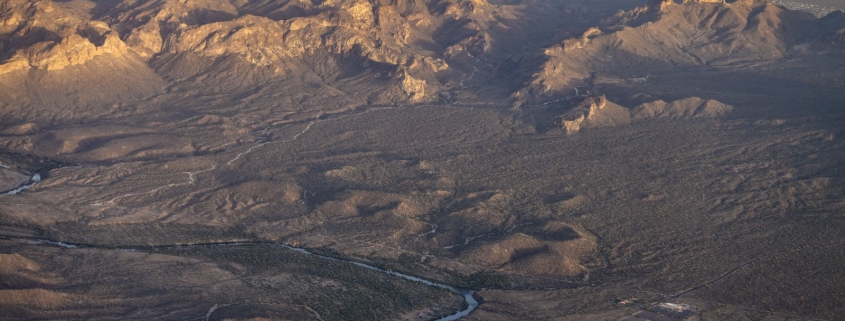 © J. Carl Ganter / Circle of Blue
© J. Carl Ganter / Circle of Blue

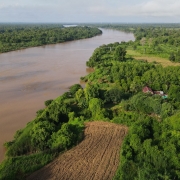

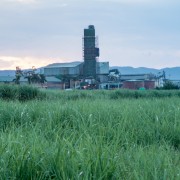

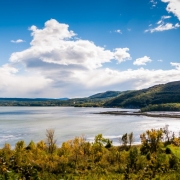


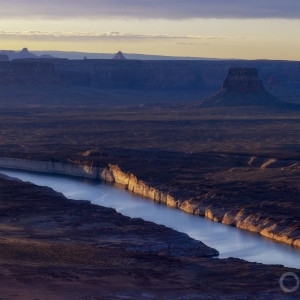
Leave a Reply
Want to join the discussion?Feel free to contribute!